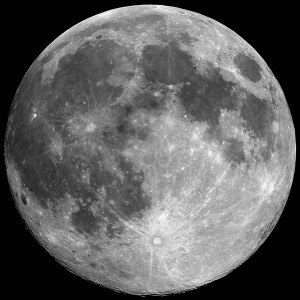Sunday
Featured StoriesApril News Roundup
An assortment of stories from around the mandala, gathered into a special edition for April 1st
Cat Lovers Were Right All Along
 Recent research by Professors R. U. Kittink and J. O. Kerz of the Central Austrian Transmeditative Research Academy (CATRA) has established what cat-loving meditators have known instinctively for years: in order to reach a measurably deep meditative state, one must be within at least 50 meters of a feline. Their research was inspired by a retreat that Kittink attended, at which a stray cat showed up halfway through the 10-day session. Virtually all of the practitioners experienced greatly enhanced meditative states immediately after the feline’s arrival, whether or not they were aware of the cat’s presence near the kitchen, where it was being secretly fed by a kitty-loving assistant chef.
Recent research by Professors R. U. Kittink and J. O. Kerz of the Central Austrian Transmeditative Research Academy (CATRA) has established what cat-loving meditators have known instinctively for years: in order to reach a measurably deep meditative state, one must be within at least 50 meters of a feline. Their research was inspired by a retreat that Kittink attended, at which a stray cat showed up halfway through the 10-day session. Virtually all of the practitioners experienced greatly enhanced meditative states immediately after the feline’s arrival, whether or not they were aware of the cat’s presence near the kitchen, where it was being secretly fed by a kitty-loving assistant chef.
 When Kittink returned home to Austria and described the “feline effect” to his research partner Kerz, they swiftly reached a decision to engage in formal study of this hitherto unknown phenomenon. Volunteers meditated within varying distances of many different felines, resulting in clear confirmation of a powerful effect anywhere within the fifty-meter perimeter. Effects were said to be even stronger when the cats themselves were meditating; although some rival researchers have decried this portion of the results, it is no surprise to anyone familiar with the facial expression of a cat resting peacefully while sitting in an “upright but relaxed position.” (See photo for example.)
When Kittink returned home to Austria and described the “feline effect” to his research partner Kerz, they swiftly reached a decision to engage in formal study of this hitherto unknown phenomenon. Volunteers meditated within varying distances of many different felines, resulting in clear confirmation of a powerful effect anywhere within the fifty-meter perimeter. Effects were said to be even stronger when the cats themselves were meditating; although some rival researchers have decried this portion of the results, it is no surprise to anyone familiar with the facial expression of a cat resting peacefully while sitting in an “upright but relaxed position.” (See photo for example.)
Further experimentation tested the hypothesis that some other kind of animal might have a similar effect, but to no avail. Dogs at any distance showed no effect on depth of meditative state, although some participants in the study noted that they were slightly happier with a dog curled up beside them during meditation. African gray parrots were apparently too intelligent, and also too vocal. Dolphins at first seemed to have a slight enhancing effect, but then researchers found that just sitting by an empty pool of water (without any dolphins) achieved identical results. One of the most interesting findings: the size and type of feline did not appear to matter, so long as the cat itself was in a meditative state.
One Pin to Rule Them All
After decades of pin culture in Shambhala, with constantly evolving new designs representing different roles and experiences, it has at last been conceded that too many practitioners are engaging in a subtle form of pin materialism. Program participants have been observed choosing pins to match the day’s clothing, jealously ogling the pins of others, or wearing their rarest or most impressive pin to capture the attention and admiration of others. Those with fewer or lower-status pins report feeling outshone by these competitive pin-wearers, ironically even when they themselves are wearing a pin depicting the Shambhala Sun.
As a result, it has been decided to ask for all pins to be returned to Shambhala; they are to be handed in by every member at local centers around the globe this coming Midsummer Day. Initial resistance to this idea only serves to illustrate the level of pin attachment being experienced, and shows how far this pernicious phenomenon has spread, as well as how strong its hold has become on the minds of Shambhalians. Clearly, immediate action is necessary.
 In exchange for the return of all previous pins, each person will receive a new pin to commemorate the occasion. Known informally as “The Dot,” this new pin will be worn by all Shambhalians at every gathering or event, regardless of rank, level, or role. Shown here in prototype form, this pin will doubtless gain in meaning over time, and each wearer’s understanding of its symbolism will grow and change as they progress along the path. In this way, the pin stands for all types and levels of attainment, without making other practitioners feel belittled or excluded. Please note: anyone experiencing attachment to “The Dot” is asked to immediately report to the nearest health and wellness representative for counseling and treatment.
In exchange for the return of all previous pins, each person will receive a new pin to commemorate the occasion. Known informally as “The Dot,” this new pin will be worn by all Shambhalians at every gathering or event, regardless of rank, level, or role. Shown here in prototype form, this pin will doubtless gain in meaning over time, and each wearer’s understanding of its symbolism will grow and change as they progress along the path. In this way, the pin stands for all types and levels of attainment, without making other practitioners feel belittled or excluded. Please note: anyone experiencing attachment to “The Dot” is asked to immediately report to the nearest health and wellness representative for counseling and treatment.
Shambhala introduces Rigday
 As an antidote to the speed of the modern world, the Shastris of Shambhala, with the guidance and blessing of the Sakyong wish to announce a change in the Shambhala weekly calendar. While this will not come into effect for some time, we understand the need for a transition period and offer a brief synopsis here.
As an antidote to the speed of the modern world, the Shastris of Shambhala, with the guidance and blessing of the Sakyong wish to announce a change in the Shambhala weekly calendar. While this will not come into effect for some time, we understand the need for a transition period and offer a brief synopsis here.
As of Shambhala Day, February 5, 2019, the Shambhala weekly calendar will consist of eight days: Monday, Tuesday, Wednesday, Thursday, Friday Saturday, Sunday, and Rigday (day of the Rigden.) This will be clearly outlined in the Year of the Earth Pig 2019-2020 Calendar and Practice Record Book.
The addition of Rigday will allow all Shambhalians an extra weekend day for practice and/or cultural events. While this may create some confusion at first, we are confident the cultural benefits will far outweigh the challenges.
Shastri Carl Oates provides this history. The eight-day week, while presently uncommon, has its roots in the ancient Mauryan Indian culture of Ashoka. Known in Sanskrti as the aṣṭáchakra (wheel of eight) it was adopted by Ashoka as the symbol of the teachings, or dharmachakra (wheel of dharma.)
This is a slight alteration of, but has its foundations in, the Tibetan lunisolar calendar, which has three different types of days (zhag), the khyim zhag, the tshes zhag and the nyin zhag. The first two of these days are astronomical days. The time needed for the sun to pass through one of the twelve traditional signs of the zodiac (the twelve khyim) is called khyim zla (solar month).
 Thirty lunar days form one lunar or synodic month (tshes zla), the period from new moon to new moon. This is equal to the time needed for the moon to elongate 360 degrees from the sun (sun to sun). The natural day (nyin zhag) is defined by Tibetans as the period from dawn to dawn.
Thirty lunar days form one lunar or synodic month (tshes zla), the period from new moon to new moon. This is equal to the time needed for the moon to elongate 360 degrees from the sun (sun to sun). The natural day (nyin zhag) is defined by Tibetans as the period from dawn to dawn.
Strictly speaking, the months appearing in a Tibetan almanac, called by us Tibetan calendar months, are not the same as lunar or synodic months (tshes zla), which can begin and end at any time of day. In Tibetan, there is no special term for a calendar month containing whole days. These calendar months are just called zla ba (month).
A Tibetan calendar month normally starts with the week day or natural day (gza’ or nyin zhag) in which the first tithi (tshes zhag) ends. A Tibetan calendar month normally ends with the week day or natural day (gza’ or nyin zhag) in which the 32th tithi (tshes zhag) ends.
In consequence, a Tibetan calendar month (zla ba) comprises 31 or 32 natural days. In the sequence of natural days or week days, there are no omitted days or days that occur twice. But since these days are also named by the term tshes together with a cardinal number, it happens that certain numbers or dates (the corresponding tithi) do not occur at all (chad) or appear twice (lhag).
Shambhalians may be interested to note that this weekly calendar also has some expressions in Western culture: https://www.youtube.com/watch?v=jZzEvqDQfIA .
Editor’s Note: Happy April 1st to all of our readers — enjoy the day, and remember to keep smiling!





